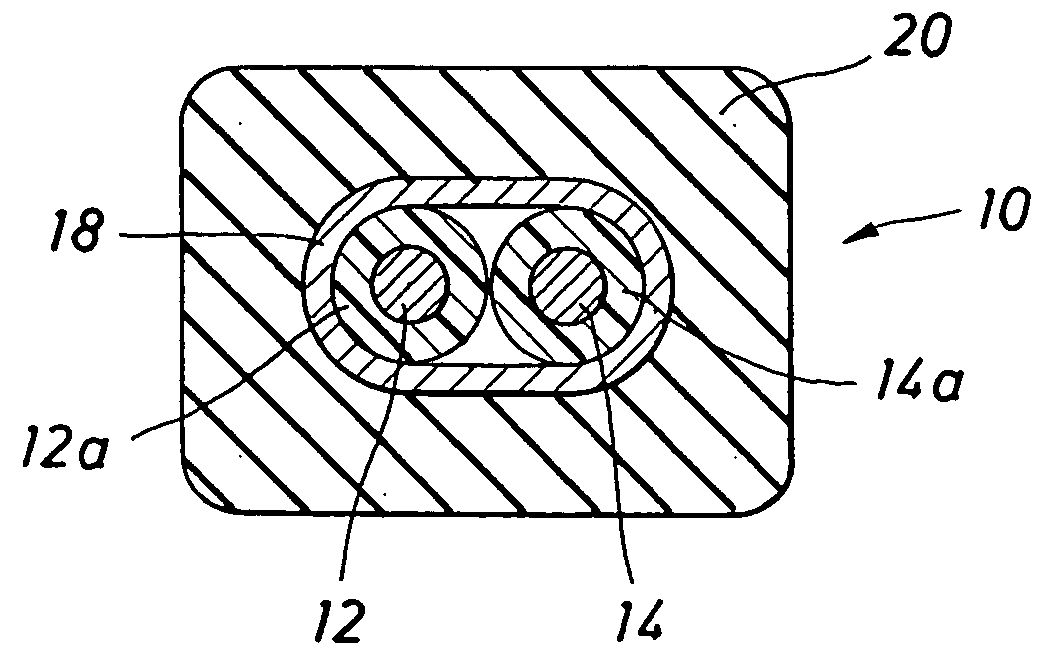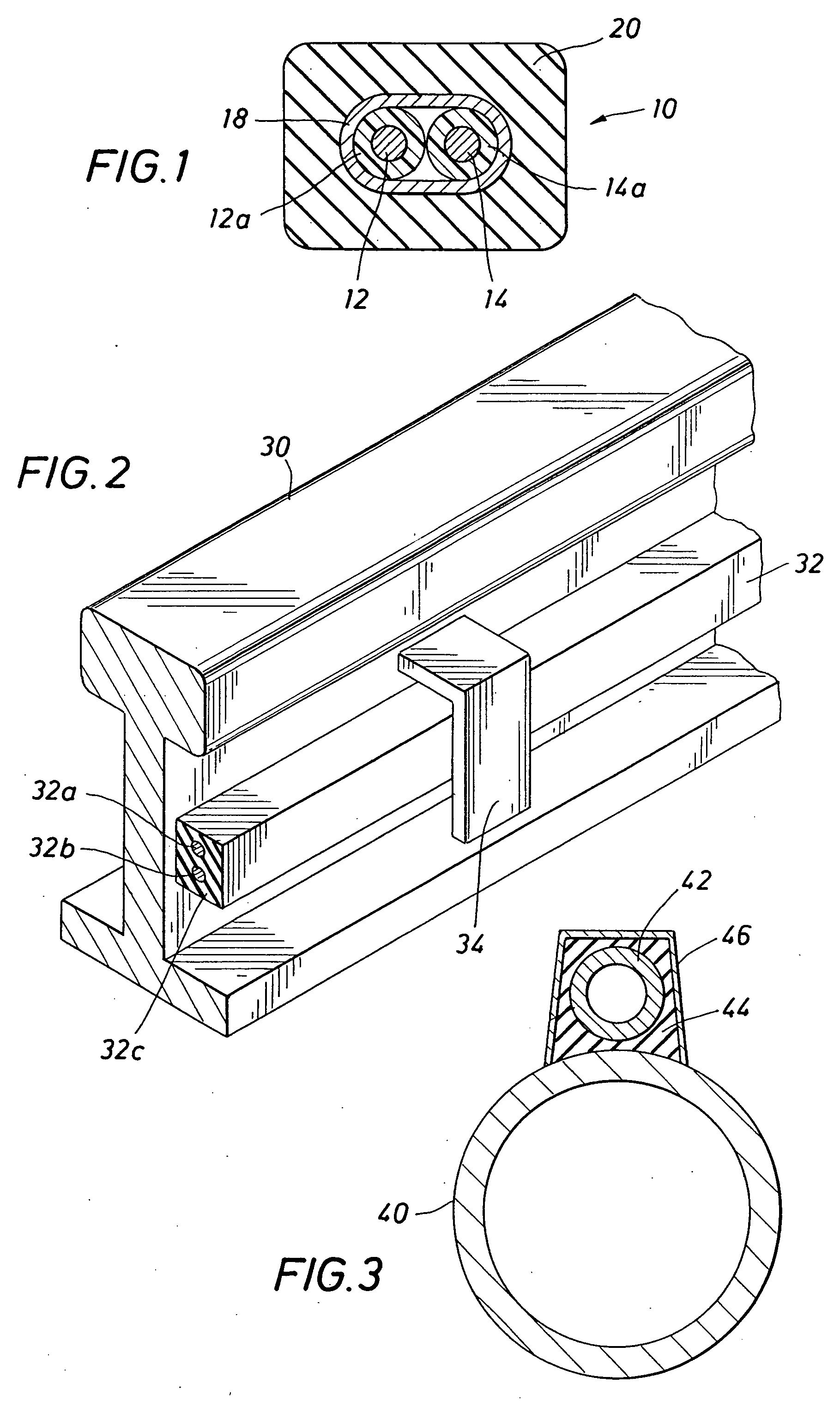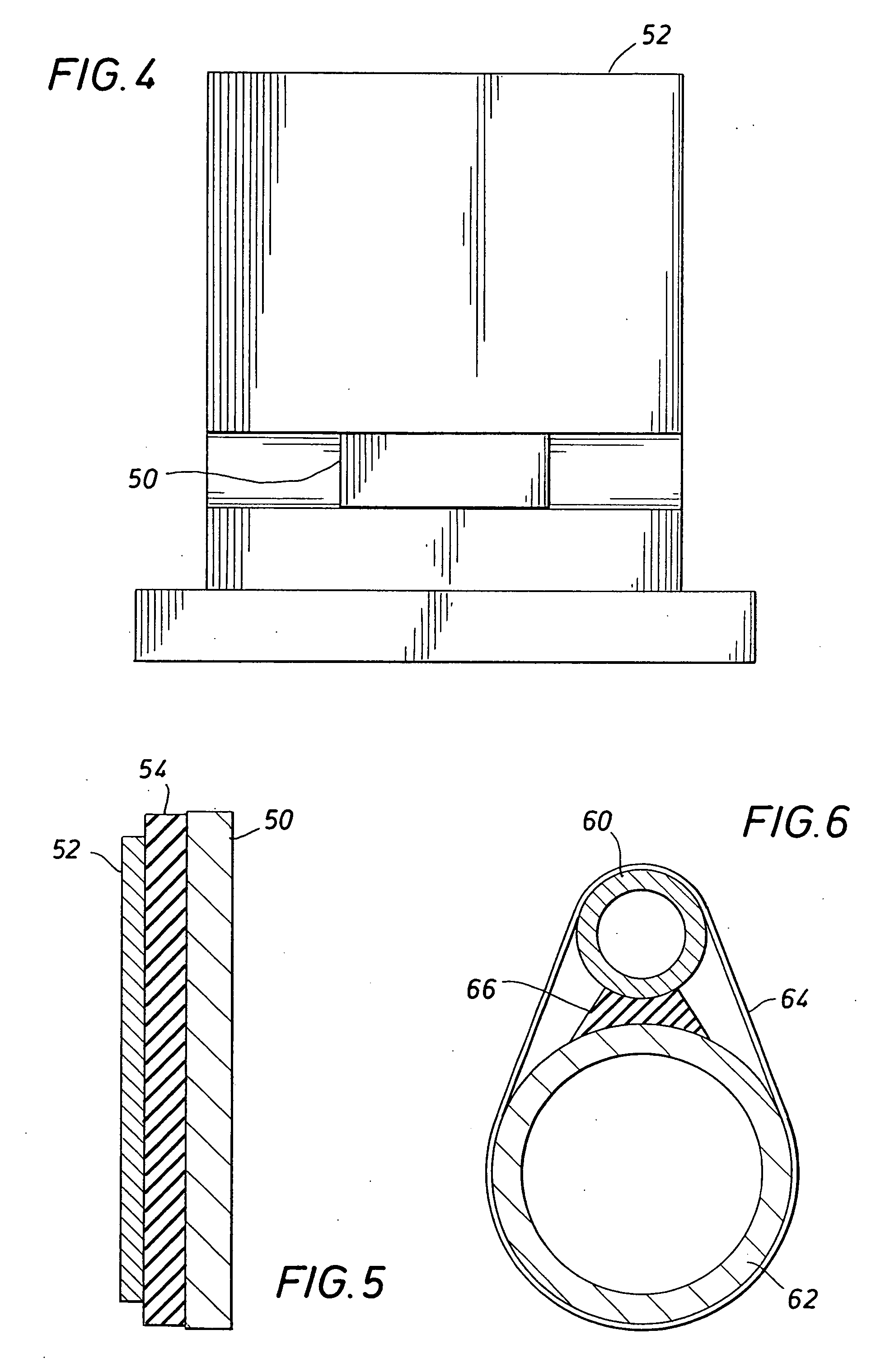Thermally-conductive, electrically non-conductive heat transfer material and articles made thereof
- Summary
- Abstract
- Description
- Claims
- Application Information
AI Technical Summary
Benefits of technology
Problems solved by technology
Method used
Image
Examples
example 1
[0046] A TEK 3C40 BN cable sample (from Thermon Manufacturing Co. of San Marcos, Tex., U.S.A.) with a conductive silicone jacket according to the present invention was tested on an 85 lb. composite rail. The purpose of this study was to investigate the heat transfer characteristic of the thermally conductive silicone jacketed cable and compare results with a regular (thermally non-conductive) silicone jacketed cable. The cable has an electrically conductive braid of copper wires and a jacket covering the wires, such as shown in FIG. 1.
[0047] An 8.83 foot long TEK 3C40 BN cable sample with thermally conductive silicone jacket was tested on a 8.66 foot long 85 lb. composite rail. A control cable sample (regular silicone jacket) of identical length was also tested. Cable samples were tested at 5, 10, 15, and 20 watts per foot at ambient temperature of approximately 5° F. The rail assembly was tested in a cold chamber.
[0048] Very significant temperature reductions (over standard silic...
example 2
[0049] A RDT 40-600 BN cable sample from Thermon Manufacturing Co. with a thermally conductive silicone jacket was tested on an 85 lb. composite rail. The heat transfer characters of thermally conductive silicone jacketed cable was compared to that of a regular silicone, SureFlow (SFOJ), jacketed cable.
[0050] An 8.83 foot long RDT 40-600 BN cable sample with conductive silicone jacket was tested on a 8.66 foot long 85 lb. composite rail. A control cable sample (regular BNSF jacket) of identical length was also tested. J-type thermocouples were located on the cable, jacket, and rail. Cable samples were tested at 5, 10, 20, 30 and 40 watts per foot at an ambient temperature of approximately −6° F. The rail assembly was tested in a cold chamber. The sheath and jacket temperatures were also measured for cable away from the rail. Test results are summaries in Tables 1 and 2. The temperature difference or delta T between the sheath and the jacket is lower for DT 40-600 BN thermally condu...
example 3
[0052] Volume resistivity for an insulating material is used to predict the dielectric breakdown of the materials. Volume resistivity was determined for conductive silicone of the present invention, silicone rubber, and graphite loaded heat transfer cement.
[0053] Volume resistivity was measured on test samples per ASTM standard D257. A Model 1864 megOhm meter manufactured by General Radio was used for volume resistivity measurements on test samples. Terminal 1 was tied to the − unknown terminal, terminal 2 to the guard, and terminal 3 to the + unknown terminal. Volume resistance was measured at 500 volts for thermally conductive silicone and silicone rubber samples. Volume resistance for graphite loaded heat transfer cement was measured at 60 volts because volume resistance could not be measured at 500 volts as heat transfer cement was too conductive for this measurement at voltage above 70 volts.
[0054] Volume resistivity was calculated from measured volume resistance in Ohms, the...
PUM
| Property | Measurement | Unit |
|---|---|---|
| Fraction | aaaaa | aaaaa |
| Fraction | aaaaa | aaaaa |
| Fraction | aaaaa | aaaaa |
Abstract
Description
Claims
Application Information
 Login to View More
Login to View More - R&D
- Intellectual Property
- Life Sciences
- Materials
- Tech Scout
- Unparalleled Data Quality
- Higher Quality Content
- 60% Fewer Hallucinations
Browse by: Latest US Patents, China's latest patents, Technical Efficacy Thesaurus, Application Domain, Technology Topic, Popular Technical Reports.
© 2025 PatSnap. All rights reserved.Legal|Privacy policy|Modern Slavery Act Transparency Statement|Sitemap|About US| Contact US: help@patsnap.com



